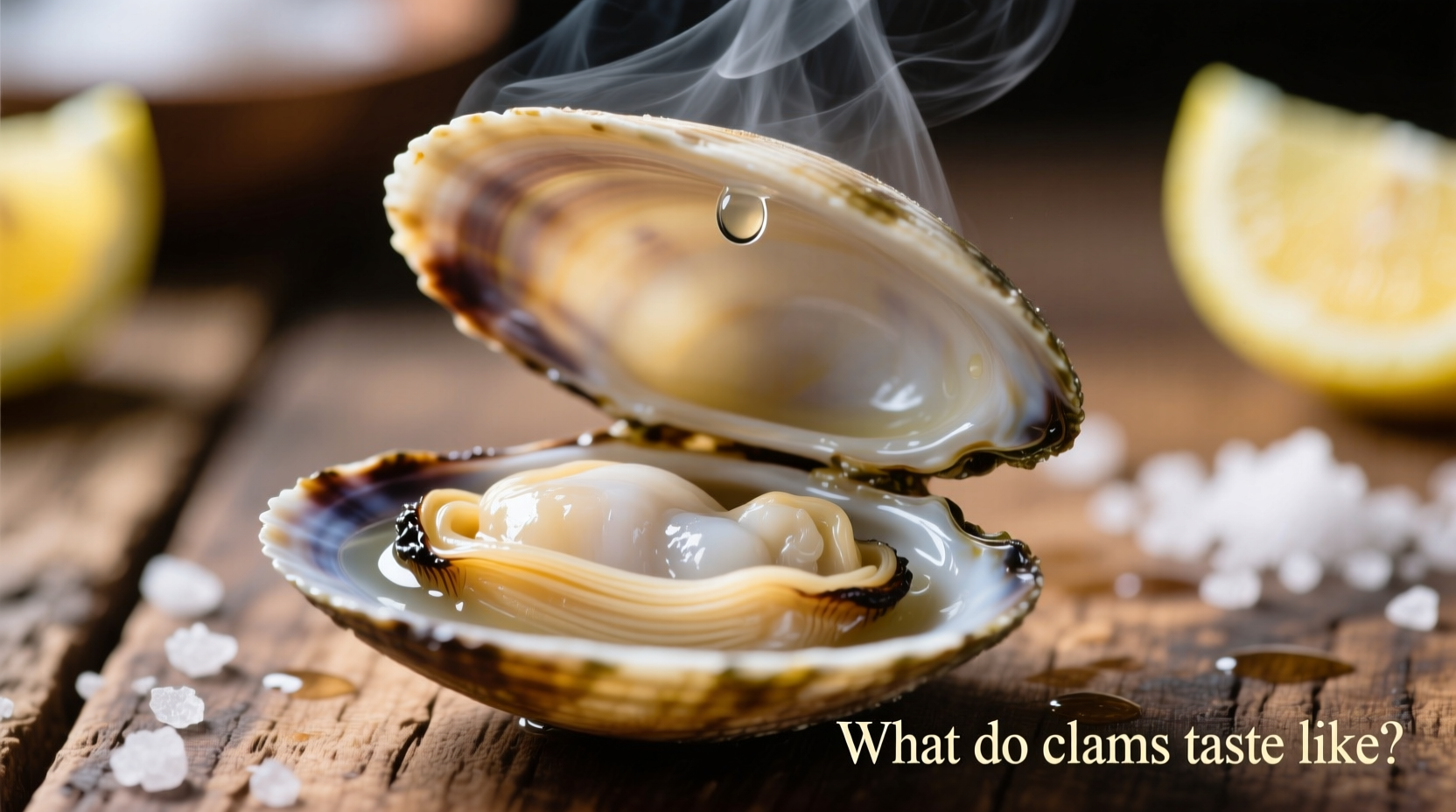Ever wondered what clams taste like before trying them? Understanding clam flavors can transform your seafood experience from hesitant first bite to confident culinary exploration. Whether you're dining out, shopping at a fish market, or planning a seafood dinner, knowing what to expect from different clam varieties helps you make informed choices and appreciate their unique qualities.
Breaking Down the Core Flavor Profile
Clams deliver a complex yet balanced flavor experience that combines several key elements:
- Brininess—a clean saltwater essence that reflects their ocean habitat
- Sweetness—a subtle natural sugar that balances the saltiness
- Umami—savory depth that enhances overall flavor satisfaction
- Mineral notes—earthy undertones from their feeding environment
Unlike some seafood that can taste overwhelmingly "fishy," properly prepared fresh clams offer a refined, refreshing taste. The texture plays a crucial role too—tender yet slightly chewy, with a satisfying plumpness when cooked correctly. Overcooking transforms this pleasant texture into rubberiness, which negatively impacts the flavor experience.

Comparing Clam Varieties: Flavor Differences Explained
Not all clams taste the same. Different species offer distinct flavor profiles that suit various culinary applications. This comparison helps you select the right clam for your needs:
| Clam Variety | Flavor Intensity | Sweetness Level | Best Preparation Methods |
|---|---|---|---|
| Littleneck | Mild | High | Raw, steamed, in pasta |
| Cherrystone | Moderate | Medium-High | Steamed, in chowder |
| Quahog/Chowder | Strong | Medium | Chowder, stuffing |
| Razor Clam | Robust | Medium | Pan-fried, grilled |
| Geoduck | Moderate | High | Raw, sashimi, stir-fry |
According to NOAA Fisheries' species identification guidelines, these flavor differences stem from each clam's feeding habits and habitat. Littlenecks filter feed in nutrient-rich estuaries, developing sweeter flavors, while quahogs in deeper waters develop more pronounced brininess.
What Affects Clam Flavor Quality
Several factors determine whether clams taste exceptional or disappointing:
Harvest Location Matters
Clams absorb flavors from their environment—a phenomenon called "merroir" (similar to terroir in wine). Those from cold, clean waters like Maine or British Columbia typically have crisper, cleaner flavors compared to clams from warmer, murkier waters. The University of Washington's School of Aquatic and Fishery Sciences confirms that water salinity directly impacts the sweetness level in clams.
Seasonal Variations
Clam flavor peaks during cooler months when they're not spawning. During summer spawning season, clams can taste softer and less flavorful as they divert energy to reproduction. This seasonal pattern holds true across most bivalve species according to research published in the Journal of Shellfish Research.
Freshness Indicators
Fresh clams should:
- Smell like clean ocean water (never fishy or ammonia-like)
- Have tightly closed shells (or close when tapped)
- Feel heavy for their size
- Have clear, not cloudy, internal liquid
Maximizing Clam Flavor in Your Kitchen
Professional chefs know that proper preparation makes all the difference when working with clams:
Cleaning Techniques That Preserve Flavor
Before cooking, purge clams of sand by soaking in salted water (1/4 cup salt per gallon of water) for 20-30 minutes. Avoid freshwater soaking, which stresses the clams and diminishes flavor. The Culinary Institute of America's seafood guide emphasizes that proper purging maintains the clam's natural salinity balance.
Cooking Methods That Enhance Natural Taste
For the purest expression of clam flavor:
- Steaming—cook just until shells open (overcooking makes them tough)
- Raw—serve with minimal accompaniments like lemon or mignonette
- Pasta preparations—use the clam's natural liquor as part of the sauce
Avoid overpowering clams with heavy sauces. Their delicate flavor shines when paired with complementary ingredients like garlic, white wine, fresh herbs, and quality olive oil.
Common Flavor Mistakes to Avoid
These errors ruin clam flavor:
- Boiling instead of steaming (makes them waterlogged)
- Adding excessive salt (clams already contain natural salt)
- Cooking with wine that contains sulfites (creates off-flavors)
- Using old or improperly stored clams
Understanding Clam Flavor Preferences
Consumer research from the Seafood Health Facts initiative shows that first-time clam eaters often describe the taste as "clean ocean" or "fresh sea breeze." About 68% of new clam consumers prefer starting with smaller varieties like littlenecks due to their milder flavor profile. The same research indicates that proper preparation significantly influences whether people develop a lasting appreciation for clams—those who try poorly prepared clams often form negative impressions that take multiple positive experiences to overcome.
Unlike stronger-flavored seafood like anchovies or mackerel, clams offer an accessible entry point to shellfish for many people. Their moderate brininess and natural sweetness create a balanced flavor that appeals to diverse palates when prepared correctly.
Frequently Asked Questions
Do clams taste fishy?
No, fresh clams should never taste fishy. They have a clean, briny-sweet flavor reminiscent of the ocean. A fishy taste indicates the clams are no longer fresh and should not be consumed.
How does clam taste compare to oyster?
Clams generally have a milder, less complex flavor than oysters. While oysters often feature strong mineral notes and varying levels of sweetness, clams offer a more consistent briny-sweet profile with less metallic aftertaste. Clams also have a firmer texture compared to the softer, creamier texture of oysters.
Why do some clams taste salty?
Clams naturally contain salt from their ocean environment, which contributes to their characteristic brininess. The saltiness level varies by species and habitat—clams from saltier waters taste more briny. Properly fresh clams shouldn't be unpleasantly salty, just pleasantly oceanic. If clams taste excessively salty, they may not have been properly purged of sand before cooking.
Do cooked clams taste different from raw clams?
Yes, cooking concentrates and slightly changes clam flavor. Raw clams showcase their purest ocean flavor with more pronounced brininess, while cooked clams develop richer umami notes. Steaming preserves more of the delicate flavor compared to frying, which adds textural contrast but can mask some subtle notes. The natural sweetness becomes more apparent when clams are cooked.











 浙公网安备
33010002000092号
浙公网安备
33010002000092号 浙B2-20120091-4
浙B2-20120091-4